Basset Hound Dog Breed Information
The Basset Hound stands out in the hound group for its impressive ability to track scents. Known for their long ears, sturdy build, and short stature, these dogs have a unique look paired with a solemn expression.
Initially, hunters of small prey, Basset Hounds are popular family pets due to their easygoing and affectionate nature. They’re known for being gentle and creating deep connections with their humans.
However, potential owners should remember that Basset Hounds can be prone to weight gain and back problems, so careful attention to their health and regular check-ups are vital. Proper grooming and a well-managed diet are crucial to keep these devoted dogs happy and healthy.
Key Takeaways
- Basset Hounds excel in scent tracking with their distinct appearance.
- These dogs are affectionate, forming strong bonds with owners.
- Owners must monitor their health, focusing on diet and exercise.
Basset Hounds are skilled in scent work due to their long ears and keen nose. They are beloved for their loyalty and calm temperament, making them great companions. Owners must manage their Basset Hound’s weight and back health regularly.
Quick Facts
The Basset Hound is known for its friendly nature and typically lives about 12-13 years. This medium-sized dog from France is celebrated for its exceptional sense of smell.
Long ears are not just charming; they help funnel scents directly to the nose, boosting the dog’s ability to track. Despite short legs that seem oddly proportioned, they’re an advantage during hunts, keeping the dog’s nose close to the ground to pick up stronger scents.
Basset Hounds have a relaxed attitude, and while they may not be the fastest, these features make them excellent hunting partners.
Basset Hound Dog Breed Pictures
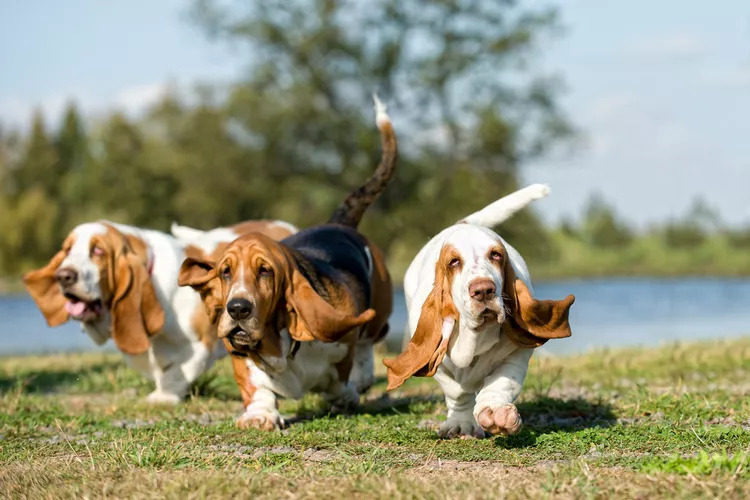
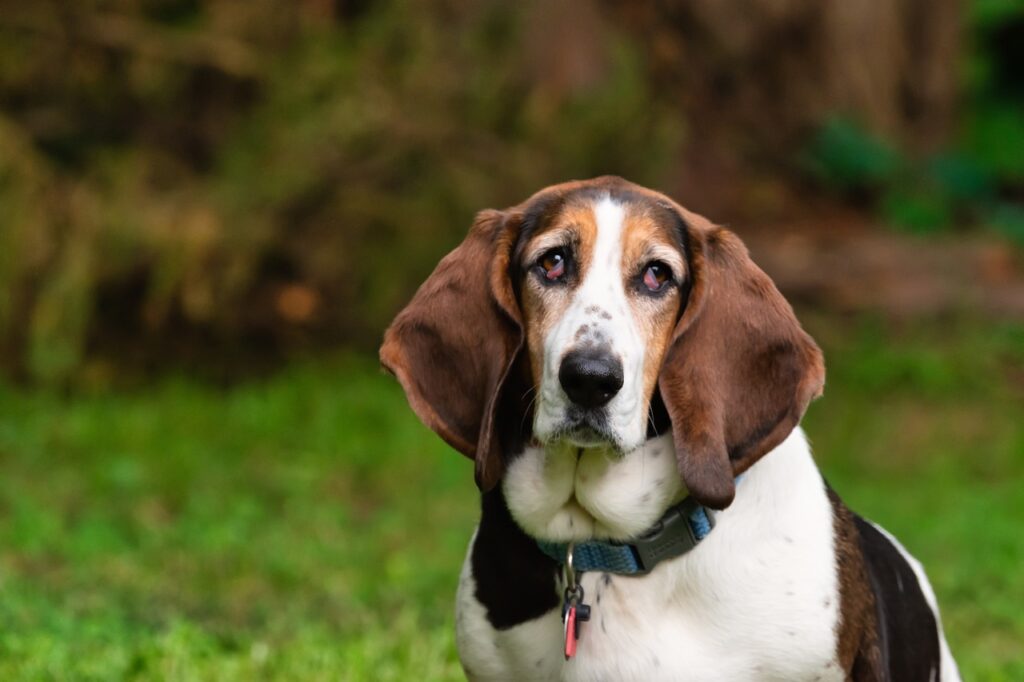
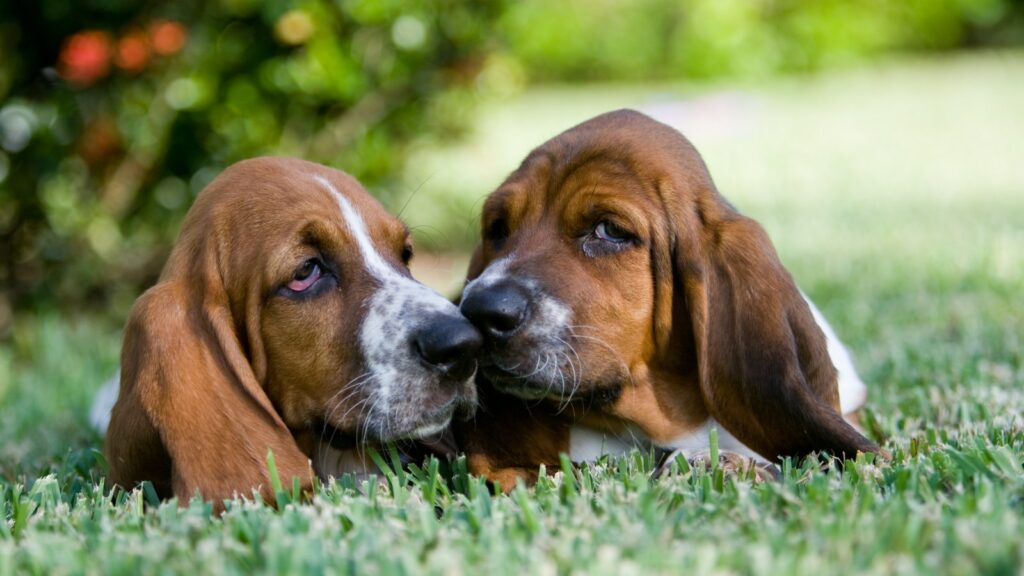
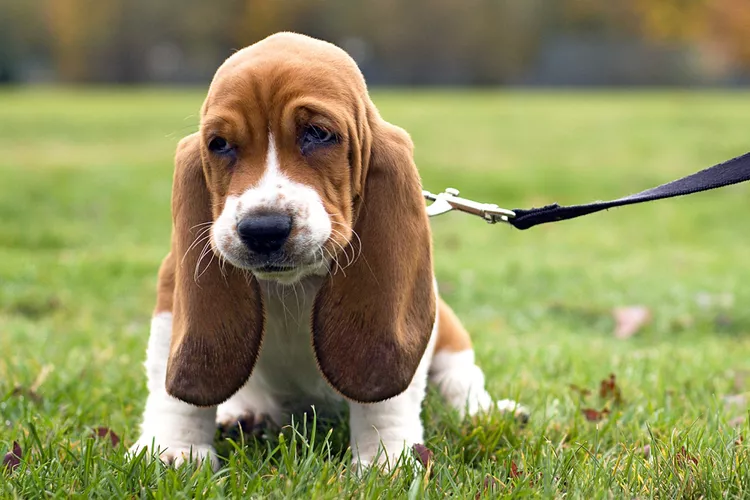
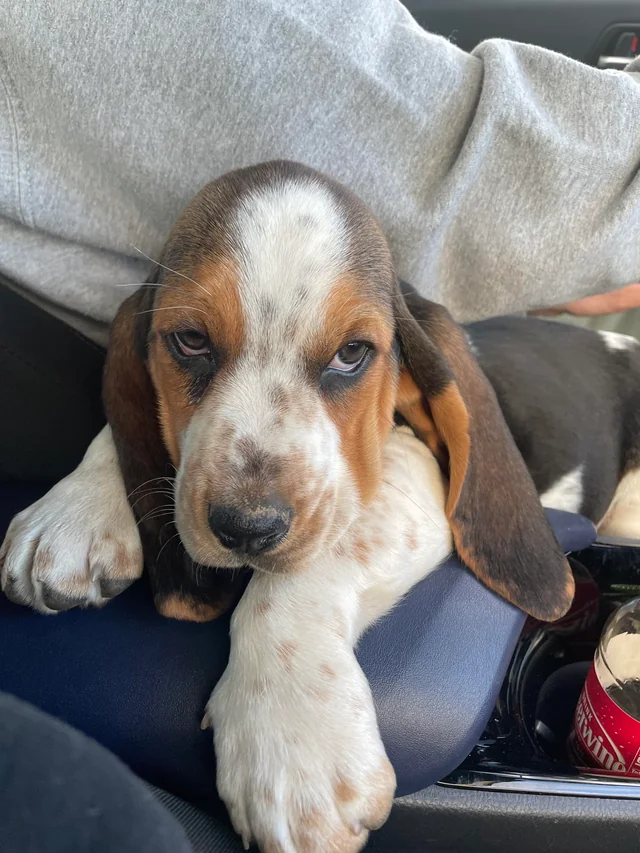
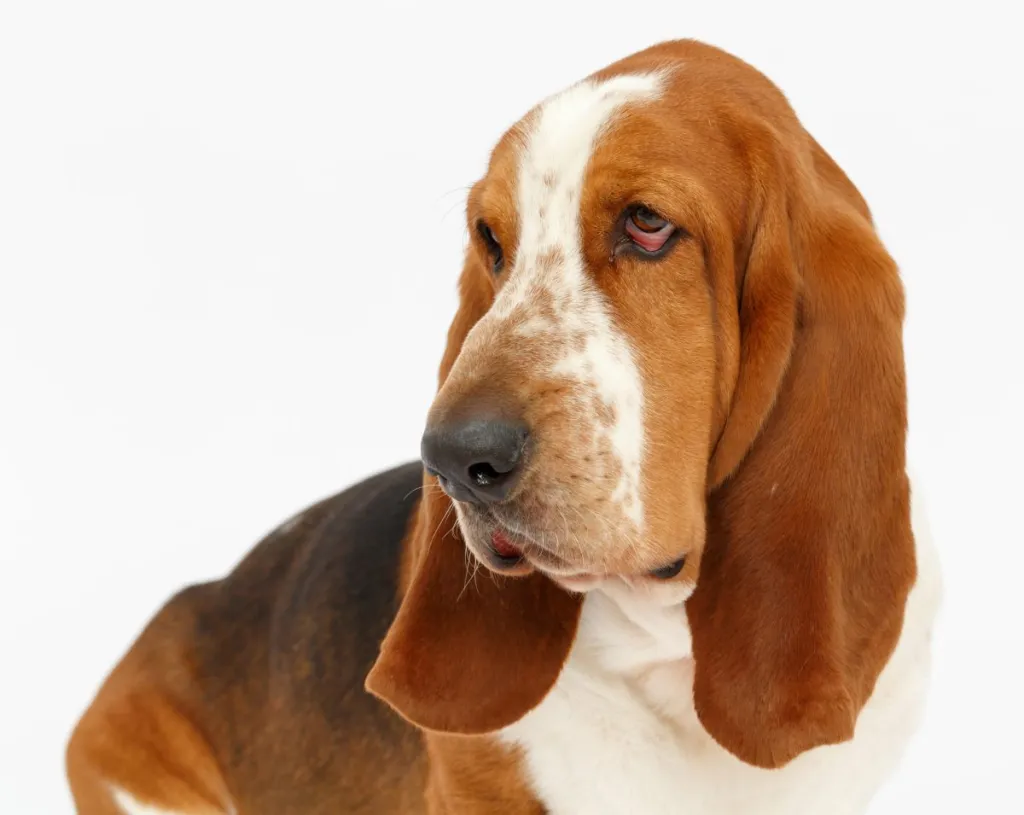
Overview
Basset Hounds are known for their strength and endurance, sporting a body built for tracking by scent. The Basset Hound is a dog breed with a history of being carefully bred for its exceptional sense of smell, allowing it to follow trails for great distances despite its shorter legs. Their long ears, dense bones, and low-slung shape aid their thorough hunting style.
Recognized by both the American Kennel Club (AKC) and the United Kennel Club (UKC), Basset Hounds are loved for their friendly nature and persistent tracking abilities. Keeping them healthy is crucial, as they are prone to specific health issues and need regular exercise to prevent weight gain.
Key Traits
Basset Hounds are known for their distinctive physical features and behaviors, making them charming pets and skilled hunters. Their exceptional sense of smell is almost unmatched, only surpassed by the Bloodhound, which makes them outstanding at tracking. Despite their short legs, Basset Hounds are agile and sturdy, thanks to their dense bone structure. Those long, floppy ears do more than make them look adorable; they help to waft scents from the ground toward their nose.
| Physical Trait | Function |
|---|---|
| Short Legs | Enhances movement and scent detection close to the ground |
| Dense Bones | Ensures steadiness and stamina |
| Long Ears | Channels scents directly to the nose |
| Wrinkled Skin | Traps scent particles within the folds |
These characteristics are not just for show; they equip Basset Hounds to be loving family members and persistent hunters.
History of the Basset Hound
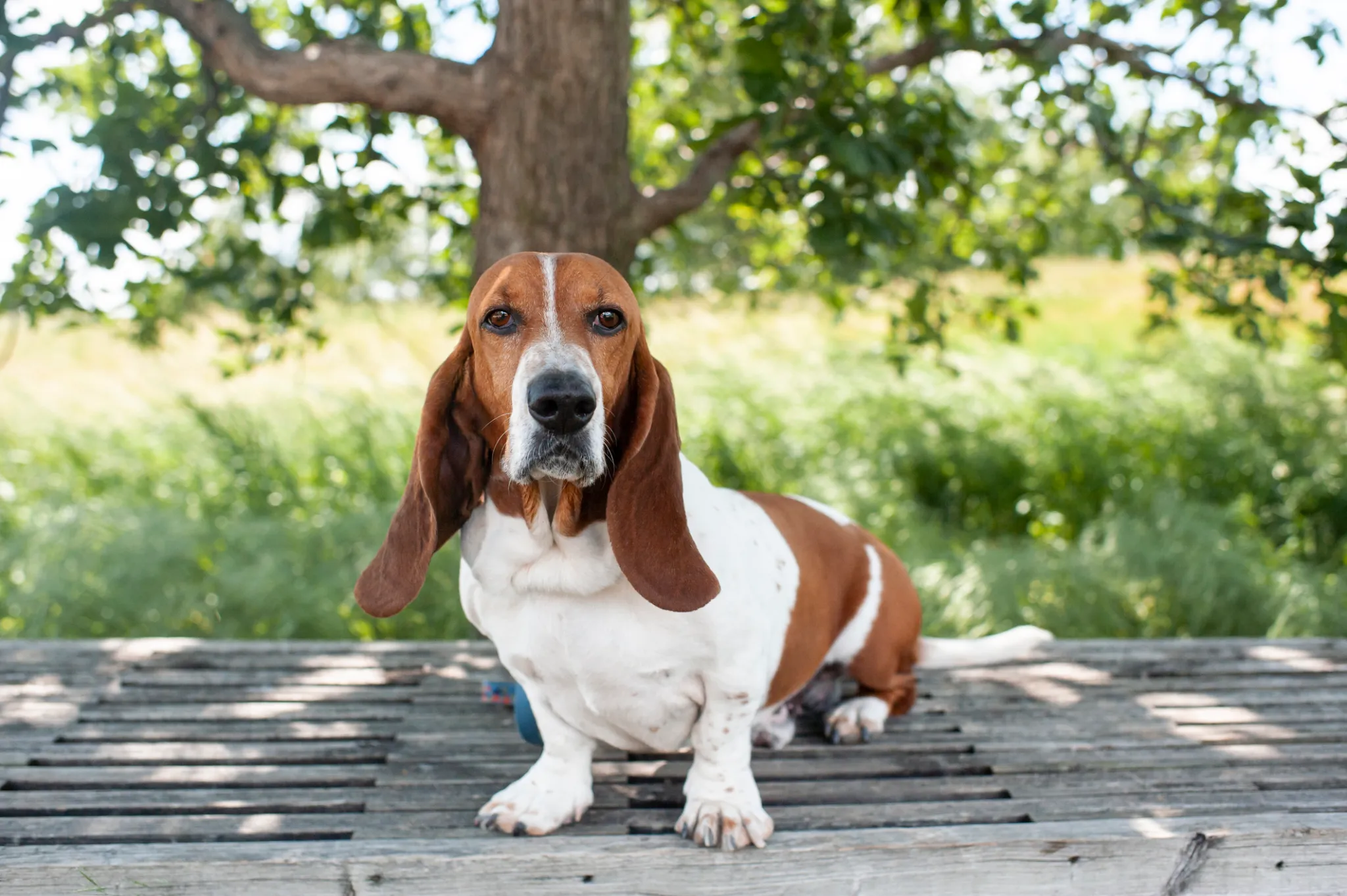
The Basset Hound has a rich history that stretches back to medieval France. Its lineage is notably connected to the St Hubert’s hounds, renowned for their exceptional tracking skills. These dogs were the ancestors of today’s Basset Hounds and were highly valued for their ability to follow scents.
Historically, these dogs played a significant role in hunting, especially adept at tracking small game thanks to their powerful noses and determined personalities. They became well-adapted to the French landscapes and the specific hunting methods of the area.
It wasn’t until the late 1800s that breeders began to selectively mate these dogs, focusing on developing the physical traits that are so distinctive in the Basset Hound we know today.
Understanding the Basset Hound’s origins helps us appreciate the breed’s specialized skills and how they were shaped by both their environment and human selection. This background highlights why the species is still popular and influential in various scent-related roles.
Ancestral Lineage
The Basset Hound’s ancestry can be traced back to France, which evolved from the St. Hubert’s hounds, known for their exceptional tracking abilities in hunting small game like hares and rabbits.
A genetic variation among the Norman Staghounds led to the creation of early basset-type hounds, which became favored during the time of Emperor Napoleon III.
Targeted breeding efforts starting in 1870 honed the breed’s distinct features: short legs, dense bones, and long ears. These efforts gave rise to the Basset Hound we recognize today, with its unique appearance and hunting prowess.
Historical Purpose
Basset Hounds trace their roots to a lineage bred for tracking scents and hunting small animals. These dogs, descending from the St. Hubert hounds, have short legs and deep mouths, perfect for moving through thick undergrowth and making low, powerful barks that hunters could hear from afar.
In France, during the reign of Emperor Napoleon III, Basset Hounds started to gain popularity. By the 1870s, breeders in France were working to refine the breed, focusing on their exceptional sense of smell that few other dog breeds could match.
Geographic Beginnings
The Basset Hound has roots in France and can be traced back to the ancient St. Hubert hounds. These dogs were transformed in the 19th century into the short-legged breed we recognize today. The Basset Hound was developed from these scent hounds, known for their powerful sense of smell, evolving to meet specific hunting needs.
The breed gained popularity among the French nobility, especially during the rule of Napoleon III. Around 1870, France focused on standardizing the Basset’s appearance, ensuring the breed’s legacy as both a practical hunter and a refined canine with deep historical connections to French hunting traditions.
Physical Dimensions
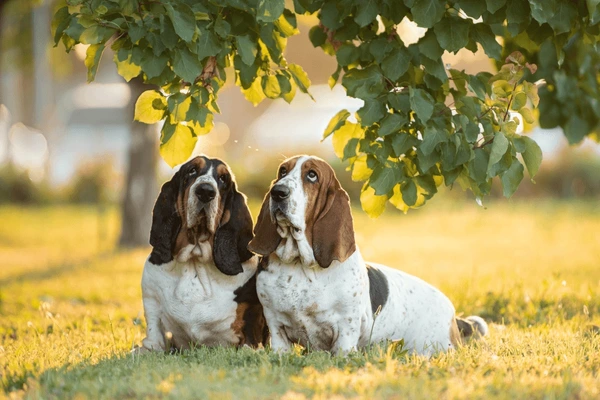
The Basset Hound stands out due to its distinctive body shape, which plays a big part in its charming appearance. These dogs typically stand no taller than 15 inches at the shoulder, giving them a signature low stature that’s easy to spot. They’re pretty sturdy, weighing between 40 and 65 pounds, reflecting their solid and muscular build.
Their ears are remarkably long, often extending beyond the tip of their nose when pulled forward, and they need consistent cleaning to prevent infections. Additionally, Basset Hounds are known for their sad eyes and long tails, which add to their expressive faces and help with their balance.
Height and Weight
Basset Hounds stand about 15 inches tall at the shoulder and typically weigh between 40 to 65 pounds as adults. These dogs have a stocky build with heavy bones and a distinctive look marked by a long body and short hair.
Their unique shape comes from osteochondrodysplasia, a genetic condition that causes their notably short limbs. Despite their small height, Basset Hounds are pretty heavy, which sets them apart from other medium-sized dogs.
Their loose skin contributes to their well-known, sad-faced expression.
Body Shape Characteristics
Basset Hounds may be low to the ground, but their body shape is notable for its elongated torso reminiscent of a dachshund, supported by short and robust legs. This structure gives them a distinctive walk and look.
They are pretty heavy for their size, weighing in at 40 to 65 pounds, carried on a compact body that ends with a robust and curved tail often seen proudly in the air. Their skin hangs loosely, especially around the front legs and neck, contributing to their unique appearance.
The Basset’s long ears and expressive face give them a soulful expression. Their physical features aren’t just for show; they’re built for an excellent sense of smell, making them exceptional at following scents.
Ear Length Considerations
Basset Hound ears are long enough to go past their lower jaw, making them stand out and extremely useful for detecting scents. These long ears help them excel in their traditional role as scent hounds by trapping vital smells for tracking.
However, their large ears can trap moisture and dirt, leading to a higher risk of ear infections. To keep their ears healthy, owners should clean them regularly and brush them weekly.
The ears’ weight can also affect the dog’s balance and strain their joints. Caring for a Basset Hound’s ears is vital to their health.
Distinctive Droopy Eyes
Basset Hounds are known for their long, droopy eyes, often more comprehensive than their skull, giving them a unique, sad look. These eyes aren’t just for show; they play a vital role in the dog’s ability to track scents.
The loose skin around their face helps to catch and direct smells to their nose, which is essential for a breed that excels in tracking. This feature is noticeable even in young puppies, indicating their natural aptitude for scent work.
The Basset Hound’s coat, short and sleek, complements their droopy-eyed appearance and is practical for their sensory tasks.
Tail Length Discussion
Measuring up to 40 centimeters, the Basset Hound’s tail is a standout feature that enhances its unique shape. This measurement isn’t just for show; it reflects the dog’s overall balance and sturdy framework.
A Basset Hound’s tail is usually long and curved, carried high, highlighting its robust build and adding to the dog’s distinctive outline. The tail’s length is well-suited to their body size and helps keep a visual balance, even with shorter legs.
It is a counterweight to their dense bone structure, accentuating the Basset Hound’s signature look and setting them apart from other breeds.
Behavioral Traits
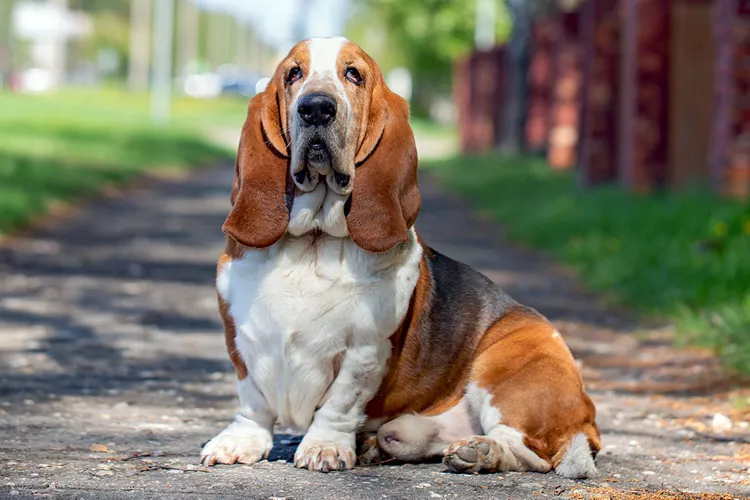
Understanding how Basset Hounds behave helps build a strong bond with your pet. These dogs have a strong hunting instinct, so you must keep them engaged and obedient when outside.
They can be stubborn, which may make training more challenging, but you can teach them effectively with patience and creative techniques. Introducing your Basset Hound to new people and places early on is critical to preventing fear or anxiety in unfamiliar situations.
Keeping your dog calm when you’re not around is essential to prevent separation anxiety. Otherwise, they might turn to destructive habits or bark a lot.
Prey Drive Management
Known for their exceptional sense of smell, Basset Hounds have a powerful prey drive that owners must carefully guide to prevent unwelcome behavior. Their natural tendency to trail scents can sometimes lead to challenges, making regular, focused training necessary.
Combine physical activities with exercises that engage their minds to balance their instinctual behaviors, like scent games or tracking events. These activities give Bassets a positive way to use their sniffing skills and strengthen the relationship between pet and owner.
Clear leadership and firm boundaries are vital to guiding their occasionally willful nature, helping to raise a friendly and responsive companion.
Stubbornness Training Challenges
Training Basset Hounds can be quite a task due to their stubborn nature. These friendly dogs need an approach that combines patience and strategy during obedience sessions.
It’s practical to use positive reinforcement to get past their stubborn behavior. This involves rewarding them for their good actions instead of punishing mistakes, which usually doesn’t work. Basset Hounds enjoy treats and praise, which can be used to motivate them to follow commands.
It’s essential to be consistent with these commands to manage their independent tendencies. Trainers who succeed with Basset Hounds usually grasp their personality traits and can guide them with firmness, patience, and understanding.
Socialization Importance
Training a Basset Hound can be challenging due to their stubborn nature, but their development must start socialization early. By introducing them to different people, other animals, and new places, you set them up to grow into friendly and well-behaved pets.
These dogs enjoy being around people, so their ability to get along with family members and guests is critical to a peaceful home. A Basset Hound socialized from a young age is more likely to be relaxed and a joy to have around.
If socialization is overlooked, the dog may develop behaviors that make it harder to fit into various social situations.
Separation Anxiety Prevention
The Basset Hound’s lovable nature is critical in preventing separation anxiety. Their gentle, patient, and relaxed characteristics make them less prone to the stress of being alone. Strong emotional bonds with their families help Basset Hounds be more resilient when alone.
Unlike more sensitive breeds, their friendly and sociable traits also reduce their chances of feeling distressed when isolated. This means Basset Hounds naturally have a defense against the stress of separation anxiety.
Barking Tendencies
Basset Hounds often use their distinctive and deep bark not as a sign of aggression but as a way to express themselves and interact with their surroundings. Despite their friendly nature with people and other pets, their barking can still be loud and frequent, requiring some training to keep it under control.
Understanding and managing this behavior is part of caring for a Basset Hound, known for being loyal, affectionate, and a bit headstrong, but always a great companion.
Common Health Conditions
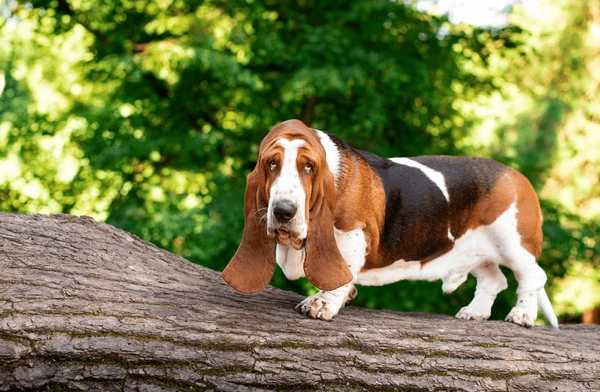
Basset Hounds have unique features that make them lovable and bring specific health issues. Owners should pay close attention to their dogs’ well-being to prevent these common problems.
Ear infections are frequent for Basset Hounds because their long ears can trap moisture and dirt. It’s crucial to keep their ears clean to avoid these painful infections.
These dogs also tend to lose weight quickly, so a controlled diet is necessary to avoid obesity and its related health risks.
Basset Hounds can develop joint problems based on their body structure. Maintaining a healthy weight and providing regular, low-impact exercise is essential. Keeping an eye out for joint discomfort allows for early treatment, significantly improving their quality of life.
Ear Infection Risks
Basset Hounds are at a higher risk for ear infections due to their long, floppy ears, which can easily hold onto moisture and dirt. This unique shape of their ears can foster the growth of harmful yeast and bacteria.
To keep their ears healthy, owners should regularly clean and dry the inside of their dog’s ears. Checking for any signs of redness, bad smell, or unusual discharge is critical to catching any issues early. Basset Hounds are also prone to ear mites, so staying ahead with preventive care is essential.
When persistent problems arise, a vet’s help is often needed, which highlights why it’s so important to include ear care in your Basset Hound’s health routine.
Obesity Management
Managing obesity in Basset Hounds is vital for their health and mobility. These dogs naturally enjoy lounging and can quickly gain weight if not monitored closely. To keep a Basset Hound healthy, owners must give them the right amount of food based on age, size, and activity. It’s also necessary to have regular check-ups with the vet to keep an eye on their weight and modify their diet as needed.
Basset Hounds need personalized exercise plans for their physical and mental fitness to suit their unique body shape without overworking them. Also, daily brushing does more than keep their coat in good condition; it strengthens the bond between the dog and the owner, which can help make the dog more active.
These steps are simple yet effective in preventing weight issues in Basset Hounds.
Joint Issues Prevention
Keeping Basset Hounds healthy and mobile requires special attention to their joints due to their distinct body shape. They are prone to skeletal issues like hip and elbow dysplasia, arthritis, and limping. Controlling their weight through a proper diet is critical to reducing joint stress.
Regular vet check-ups can catch early signs of osteochondrodysplasia, which affects bone growth and is vital for managing elbow dysplasia.
Regular, gentle exercise benefits their joints, and feeding them a diet formulated for large-breed puppies can help prevent hip dysplasia.
Also, don’t overlook ear health; keeping their ears clean can prevent issues that might affect their balance and lead to limping.
Grooming and Maintenance
Caring for a Basset Hound involves a routine to meet their unique requirements.
You’ll need to brush their coat once a week, but increase this to daily sessions when they’re shedding more.
Keeping their ears clean is vital due to their floppy nature, which can trap moisture and lead to infections. Trimming their nails regularly is essential to prevent discomfort and potential health issues. Paying attention to the folds in their skin is also necessary to prevent any skin conditions from developing.
Proper grooming keeps your Basset Hound looking sharp and supports their overall well-being.
Coat Brushing Frequency
Basset Hounds need their coats brushed once or twice weekly to keep their skin and fur in good shape. Their short coats and stretchy skin can easily get tangled and dirty without regular care. Brushing not only keeps them clean but also helps to avoid skin issues that Bassets are prone to.
Shedding increases in the spring and fall, so you might need to brush them daily to handle the extra fur. Regular grooming is necessary to keep Bassets healthy, especially since they tend to gain weight.
Ear Cleaning Importance
Regular ear cleaning is crucial for the health of your Basset Hound, mainly because their distinctive floppy ears can trap moisture and debris, leading to infections and other health problems.
For a Basset Hound like Sherlock, those charming droopy ears need consistent attention to prevent the growth of bacteria and yeast. Cleaning and checking your dog’s ears regularly is essential; if you ignore this aspect of their care, your pet could face unnecessary discomfort and possibly even require veterinary treatment for more severe conditions.
Nail Trimming Schedule
Keeping your Basset Hound’s nails trimmed is just as crucial as cleaning their ears, especially since their short legs need to support their body comfortably.
Basset Hounds have a genetic condition that affects their bones and joints. So, regular grooming helps prevent issues that could make joint conditions like arthritis worse.
Although active dogs might naturally wear down their nails, Basset Hounds aren’t very busy. So they need extra help with their claws. If their nails get too long, it can change the way they walk and cause extra strain on their already sensitive joints. This can lead to pain or problems with moving around.
Wrinkle Care Tips
Taking care of your Basset Hound’s skin, especially cleaning its wrinkles, is crucial in preventing skin conditions and keeping your dog comfortable. It’s essential to clean between the skin folds during your grooming sessions to stop bacteria and yeast from growing in the moisture and debris.
Paying close attention to these areas helps maintain skin health and can even help prevent joint issues like arthritis, which infections can worsen.
Since Basset Hounds are scent-driven, balancing their need to follow scents and keep their skin clean and healthy is essential.
Bathing Recommendations
Basset Hounds, known for their floppy ears and soulful eyes, need regular baths and brushing to stay clean and healthy. They tend to drool, especially when it’s hot, which makes frequent baths essential for good hygiene. Weekly brushing helps keep their coat in good condition, but they might need more baths if they’ve rolled in dirt or something messy. It’s also vital to clean and dry the folds of their skin, especially around their ears, to prevent infection.
Brushing these dogs every day during the shedding seasons of spring and autumn is a good idea. Consistent bathing during these times will help manage hair loss and keep your Basset Hound looking and smelling fresh.
Dog is Good: Dietary Requirements
Caring for your Basset Hound’s diet is essential to their health and longevity. It would be best to make wise food choices that match their lower metabolism to keep them in good shape. It’s also vital to prevent obesity, a common issue in the breed due to their body structure and propensity for weight gain.
Keep an eye on their changing dietary needs as they age or if they face health challenges. Regular check-ups with the vet are crucial for adjusting their diet based on medical advice. Together, these steps form a solid plan for a diet that meets the specific needs of Basset Hounds, ensuring they stay happy and healthy.
Optimal Food Choices
Choosing the right food for Basset Hounds is vital to keeping them healthy. They are prone to gaining weight and specific health issues, so a well-balanced diet that controls calories can help maintain a healthy weight and prevent obesity.
For Basset Hounds, which often have deep chests, it is also vital to lower the risk of Gastric Dilatation-Volvulus (GDV), a potentially fatal condition. To do this, it is best to give them smaller meals throughout the day and avoid foods that can cause a lot of gas.
In addition to weight management, supporting their joint health is also essential. A diet that includes omega-3 fatty acids and glucosamine can help keep their joints healthy and reduce the chances of arthritis and lameness.
Regular check-ups and diet adjustments are essential to keep Basset Hounds thriving and free from these health problems.
Obesity Prevention Strategies
To prevent obesity in Basset Hounds, it’s necessary to tailor their diet to control calories and provide the proper nutrients. Strict measures are needed since these dogs are more likely to become overweight, which can lead to serious health issues.
Caregivers should calculate the correct amount of food based on the dog’s age, how much they move around, and their unique metabolism. Consistency in their diet is vital, and someone must watch to ensure they don’t overeat, which Basset Hounds often do.
Managing how much they eat is crucial, and keeping a close eye on their weight and overall health helps adjust their food intake to keep them in good shape. Regular check-ups and adjustments to their meals will help maintain their well-being.
Special Nutritional Needs
Caring for a Basset Hound means paying close attention to their diet to help them avoid obesity and other health issues. Since they tend to gain weight quickly, managing their food portions is necessary to monitor their calorie intake. It’s also important to schedule meals and exercise at the correct times to prevent gastric dilatation-volvulus (GDV), a severe condition that can occur if they’re too active after eating.
For puppies of this breed, choosing a food designed for large breeds can help prevent hip dysplasia, leading to arthritis and difficulty walking as they age. Keep an eye on your Basset Hound’s appetite, as their keen sense of smell might encourage them to overeat.
Lastly, regular check-ups with the vet are vital to keep them healthy and cater to their unique nutritional requirements.
